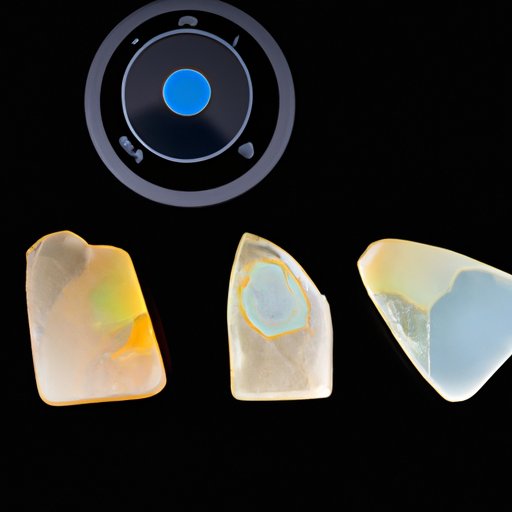
Introduction
Opal is a mesmerizing gemstone that is often used in jewellery making and as a collector’s item. While synthetic opal exists, there is much value placed on natural, or raw, opal. Natural opal is formed through geological processes and has distinguishing features that set it apart from the synthetic variety.
Observation and Inspection
Observing the appearance and texture of opal is the first step in determining whether it is a raw stone. Raw opal will typically have an uneven or rough texture. In comparison, synthetic opal has a smooth texture due to the process of manufacturing the stone. Additionally, natural opals can have inclusions that give it a unique character and value.
One of the primary features to look for in opals is their color. Raw opals have a natural and organic color distribution. The patterns within the stone can vary widely. They can display layering effects or have flecks of color dispersed throughout. Synthetic opals tend to have identical and regular patterns.
The Water Test
The water test is a common and effective way of detecting whether an opal is raw or not. When placed into water, raw opals will often exhibit an effect known as “play of color” as the light travels through the stone. Synthetic opals, on the other hand, will not show this glimmering display. This display is due to the natural shape of the stone and the water’s ability to amplify the colors. Additionally, inclusions in the stones can be seen and inspected while submerged. Raw opals can sometimes have small bubbles or cracks inside the stone while synthetic opal does not have these types of features.
Scratch Test
A scratch test can also be used to differentiate between raw and synthetic opal. By taking a sharp object and lightly scratching the surface of the stone, you can observe the reaction. Raw opals will not show any distinct marks and any inconsistency will be subtle and hard to detect. Synthetic opal, however, will show visible scratches on the surface. This test is not recommended for a high-end collector or jeweller because it can damage the stone.
UV Light Test
Utilizing a UV light is an efficient way to identify altered opals. Natural opals will emit a specific type of glow when placed under ultraviolet light. The response to the light depends on the stone. For instance, black opals will glow with a red or orange light. Treated or synthetic opals will have a different and noticeable reaction which will be different from natural opals. These can indicate whether the opal is raw or it has been treated to change its appearance.
Comparisons
One of the most effective methods is to compare the opal in question to other raw opals within an existing collection. This not only allows for a physical comparison of texture and patterning but also for comparison with regards to the “play of color” and specific other traits that raw opals exhibit. By examining and comparing several raw opals, anyone can easily learn to identify a raw opal.
Conclusion
Identifying raw opal can seem like a daunting task, but by using these methods, it can be done accurately and effectively. The texture, inclusions, play of color, reaction to light, and other distinguishing features make raw opals unique. By following these steps, it is possible to develop the knowledge and skill needed to differentiate raw opals from other types of opals. The journey of identifying and learning about these unique and fascinating stones can add to the enjoyment and appreciation of them.




